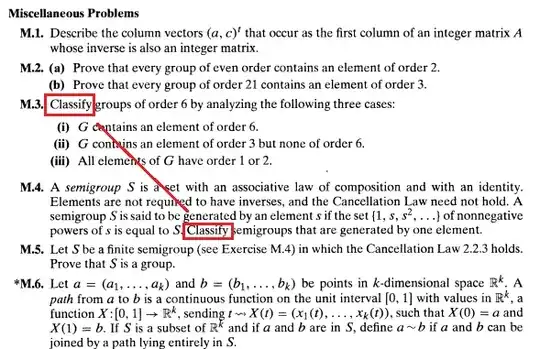Algebra by Michael Artin Exer 2.M.4
M.4. A semigroup S is a set with an associative law of composition and with an identity. Elements are not required to have inverses, and the Cancellation Law need not hold. A semigroup S is said to be generated by an element s if the set $\{1, s, s^2, . . .\}$ of nonnegative powers of s is equal to S. Classify semigroups that are generated by one element.
It looks like what Artin calls semigroups are what Wiki calls monoids.
How does one go about doing this? Based on Exer 2.M.3 (*), I think we have to take cases about the possible properties $s$ might have. Based on Wiki, I think monoids generated by 1 element are only the trivial monoid. Is this right? I think the issue is that if some element doesn't have an inverse, then we get $\{s,s^2,...\}$ with no identity element $1$.
(*) Exer 2.M.3
